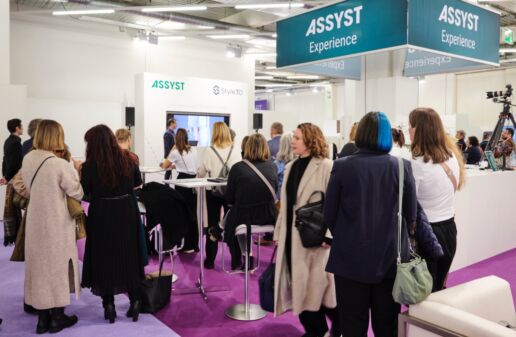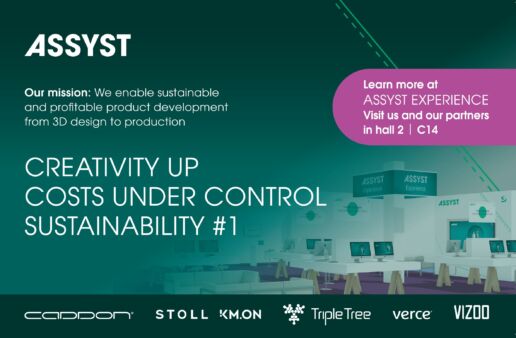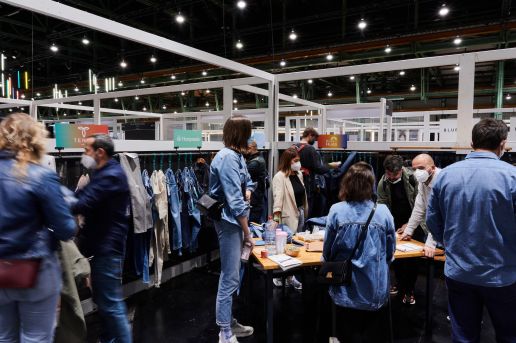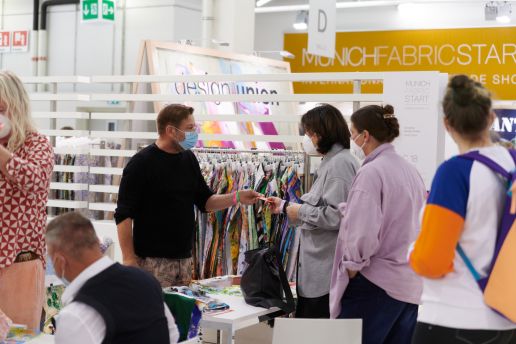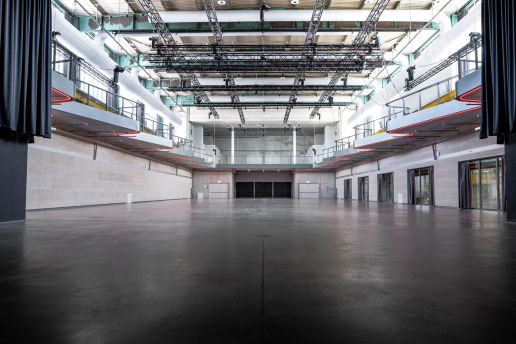Sustainability:
Designers as game changers
Creativity up and costs under control – that’s the true heart of sustainability.
At the Assyst Experience, creative designers will see how they can have a huge influence on material consumption.
Designers as game changers
At the Assyst Experience, creative designers will see how they can have a huge influence on material consumption.
Purchasing and production are usually responsible for sustainability. However, you can significantly influence costs, material consumption and profitability if you think beyond reusable fabrics – and the key to this is in the hands of apparel designers.
Shaping sustainability and profitability with 3D
Nowadays, development in 3D is everywhere. Optical prototypes help to save samples during approval procedures. How sustainable and cost-efficient the entire development process actually is becomes apparent as soon as the design draft moves on to technical product development. Most 3D design software is not based on production-safe patterns. If important information for product development and production such as seam allowances and sizing & fitting is missing, the pattern must be changed and re-approved in 2D. Physical samples are then necessary, despite the 3D design. Not so with Assyst.
Achieving a better hit rate for designs – without any physical samples
The Assyst 3D design software is always based on a production-oriented 2D pattern that supports a seamless process from 3D through to production. This ensures greater sustainability and cost efficiency. Because a digital product has already been created in the design you can decide on the look, but also whether the sizing & fitting is correct and what the later production result will be. These advantages are evident in the entire process – but especially in design, where time is tight. The more efficient this phase is, the less burdensome it will be for all departments. Development can be cut short to just a few days instead of weeks.
Buying and producing precisely the right amount of fabric
In the digital development process data flows from production to design just as easily and quickly as from design to production. This is important because a lot can be achieved at the beginning of the process. Let’s assume that the 3D design software is networked with order optimization. If so, all the participants can estimate the fabric consumption and material costs from the first draft and quickly introduce countermeasures if the product costs deviate in any way from the collection framework plan. Companies can also negotiate in a more targeted manner and only have as much fabric produced as is needed.
Always the correct production result for color, material and sizing & fitting
All the elements of a clothing product can be digitally controlled in the process. Color can be captured precisely and sent to supply partners. These values serve as exact references for quality control. Digital fabrics with the textures and properties of the actual materials help creative designers with product simulation and facilitate remote decisions.
Thinking of new ways
If the product is entirely digital, it makes sense to become creative in the process and drive innovations like automation. Not only fabric developments but also knitting designs can be developed digitally, visualized in 3D for a sizing & fitting check and then transferred straight to the knitting machine.
The Assyst Experience – a new event format for digital design
At the Assyst Experience, these topics will come alive for you! Exemplary processes give designers ideas for implementation in their own companies, and lectures on key topics of the industry complete the program.


